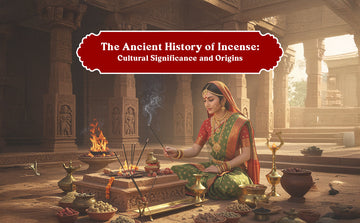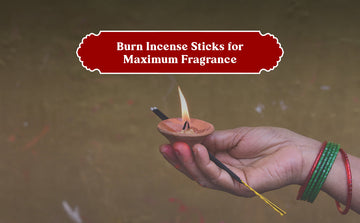Ugadi, the celebration of the Hindu New Year, is a time steeped in rich traditions and rituals, particularly in the states of Andhra Pradesh, Telangana, Karnataka, and Maharashtra. Among these rituals, the use of incense plays a significant role, enhancing the spiritual atmosphere and connecting devotees with the divine.
The Role of Incense in Ugadi Rituals
Spiritual Connection
Incense has been an integral part of Hindu rituals for centuries. During Ugadi, lighting incense sticks (agarbattis) is believed to purify the space and elevate spiritual vibrations. The fragrant smoke serves as a medium through which prayers and offerings are sent to the divine, creating a sacred ambiance conducive to worship and reflection.
Symbolism of Incense
The act of lighting incense during Ugadi symbolizes devotion and respect towards deities. According to traditional beliefs, the rising smoke represents a connection between the earthly realm and the heavens, carrying prayers upward. This practice not only enhances the sensory experience of prayer but also signifies cleansing—both of the physical space and the mind—preparing participants for a year filled with positivity and spiritual growth.
Traditional Incense Rituals During Ugadi
-
Preparation and Decoration
Before the festivities begin, families clean their homes thoroughly and decorate them with colorful rangolis and fresh mango leaves. This preparation creates an inviting atmosphere for the rituals that follow. Incense is often lit during this time to fill homes with pleasant fragrances that symbolize purification. -
Puja (Prayer Rituals)
On Ugadi day, families gather to perform puja at home or in temples. Lighting incense is a vital part of this ritual. It is typically offered alongside other elements like diyas (lamps) and flowers on a sacred plate (Pooja Thali), enhancing the spiritual energy of the ceremony. The fragrance of incense not only uplifts spirits but also fosters a sense of community as families come together in prayer. -
Offering Prayers
As incense burns, devotees offer prayers of gratitude for past blessings while seeking divine guidance for the upcoming year. This ritual is often accompanied by reading from the Panchangam (Hindu calendar), which provides astrological insights for the new year. The smoke from incense serves as a reminder of divine presence, enveloping participants in an atmosphere of tranquility. -
Culmination with Ugadi Pachadi
The unique dish prepared during Ugadi, known as Ugadi Pachadi, embodies various flavors representing life's experiences—sweetness (jaggery), bitterness (neem), sourness (tamarind), and more. This dish is often served after prayers, symbolizing acceptance of all aspects of life. The fragrance from incense complements this dish's preparation, creating a holistic sensory experience during celebrations.
Conclusion
The traditional incense rituals during Ugadi not only enhance the spiritual significance of this auspicious occasion but also foster a deeper connection between families and their cultural heritage. By incorporating incense into their celebrations, devotees create an environment filled with peace and positivity, setting intentions for a prosperous year ahead. As Ugadi approaches, embracing these rituals can elevate both personal spirituality and communal bonds within families and communities alike.





